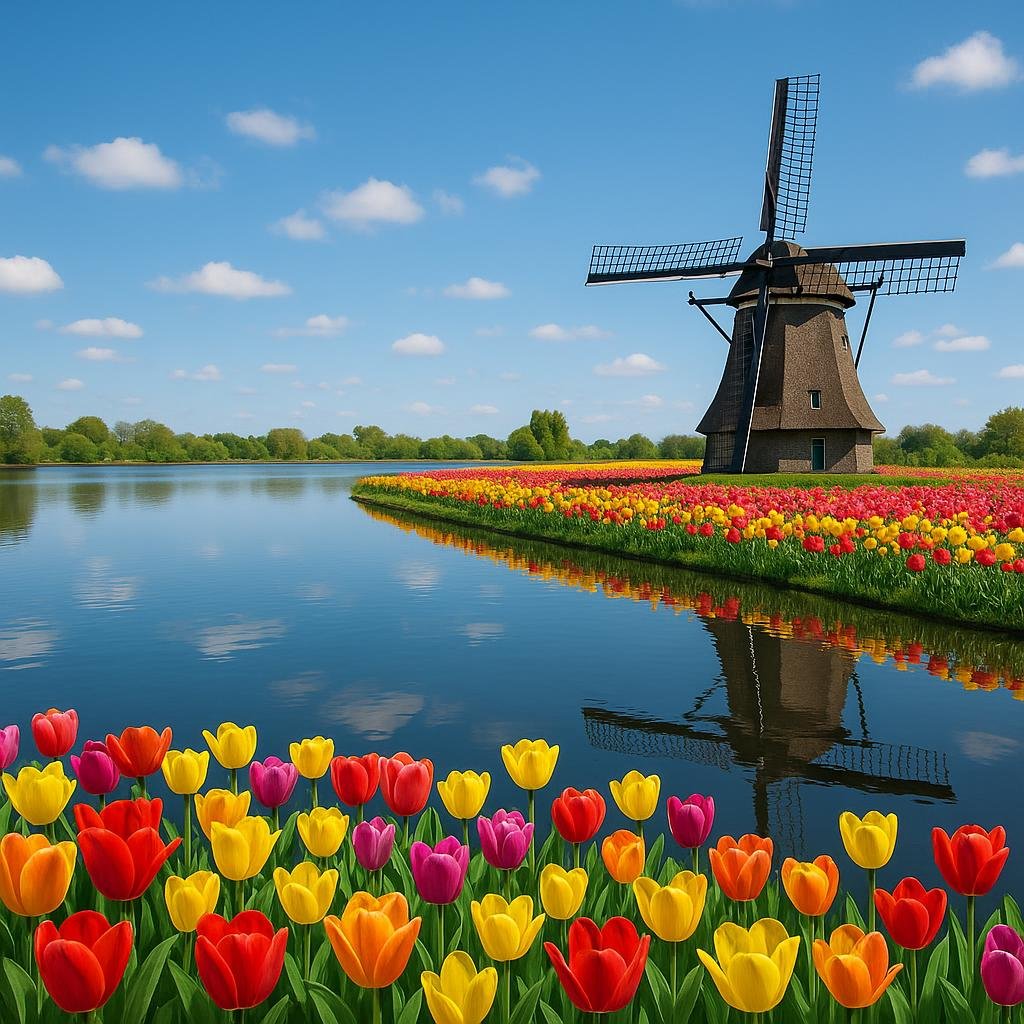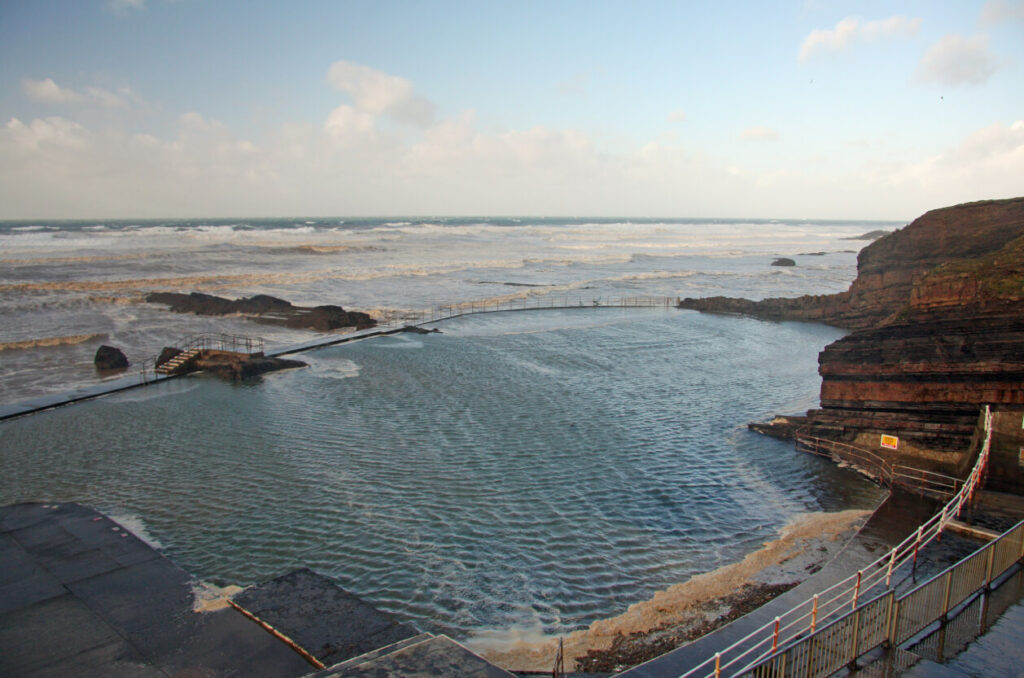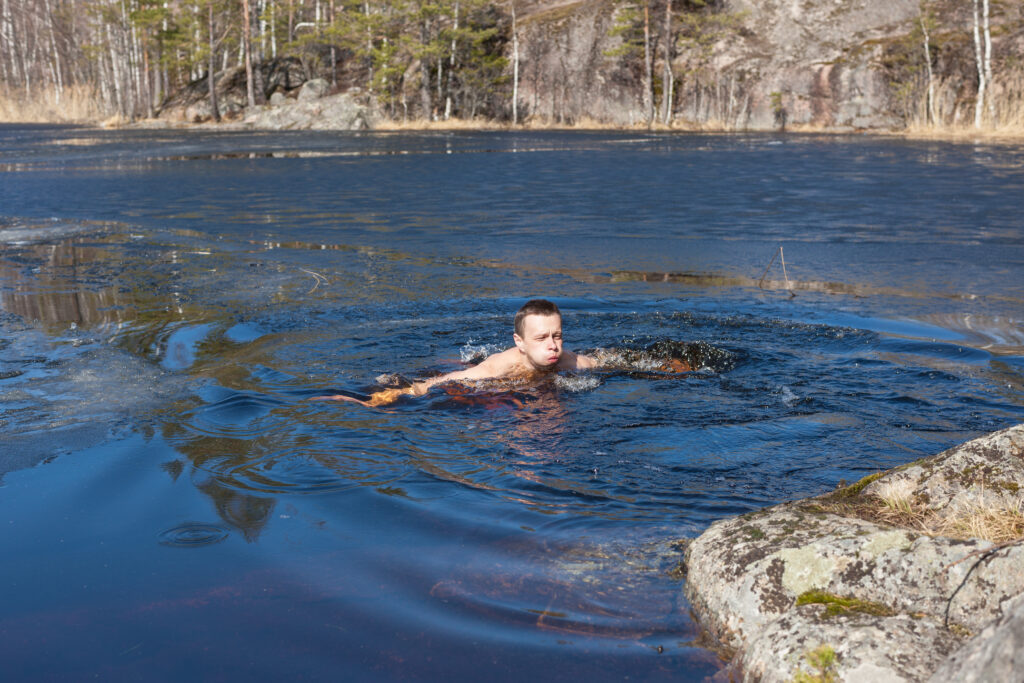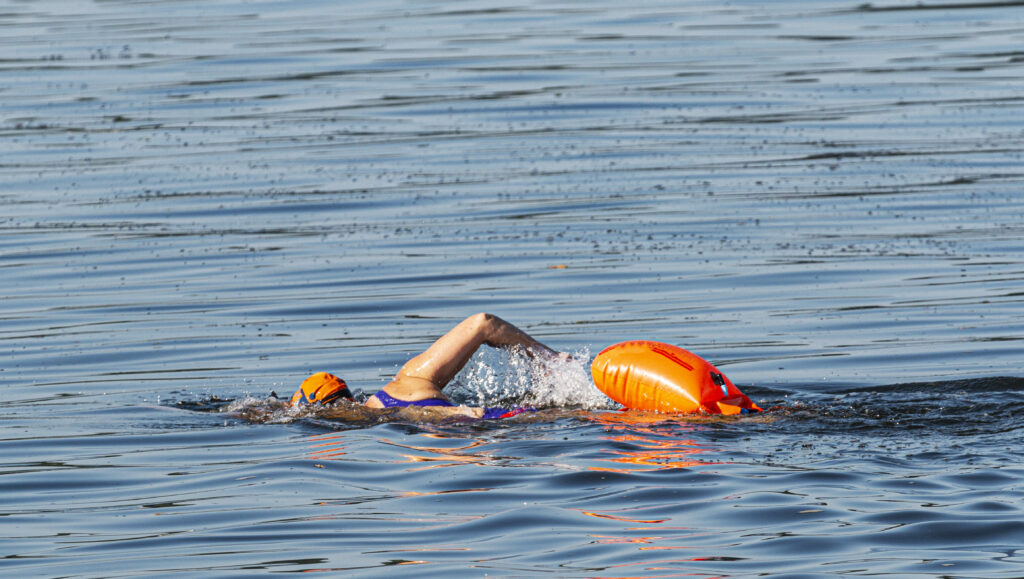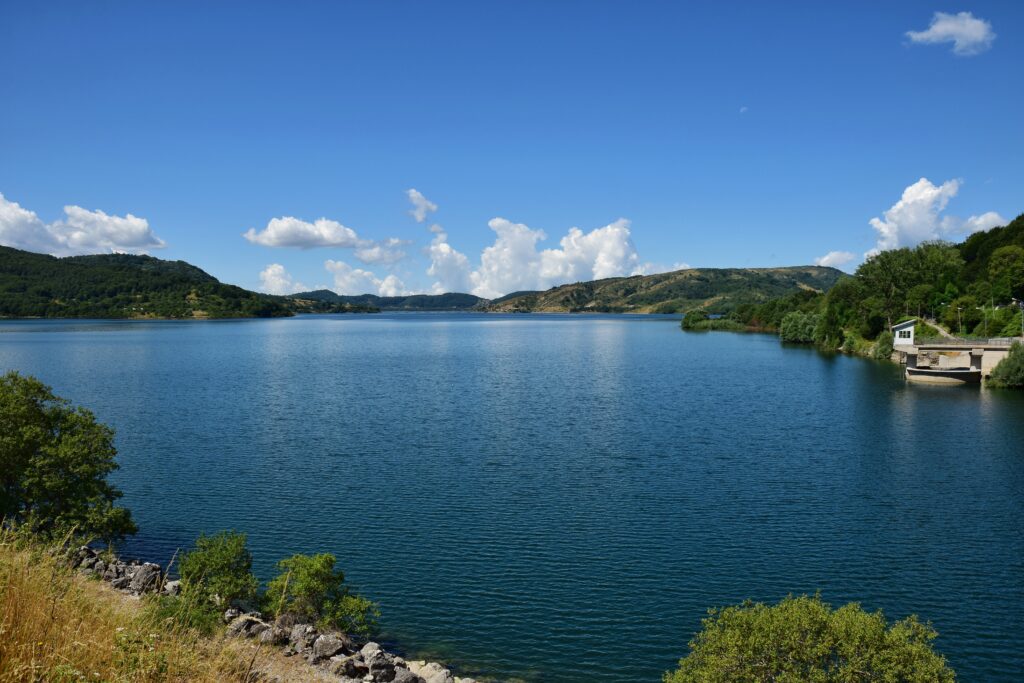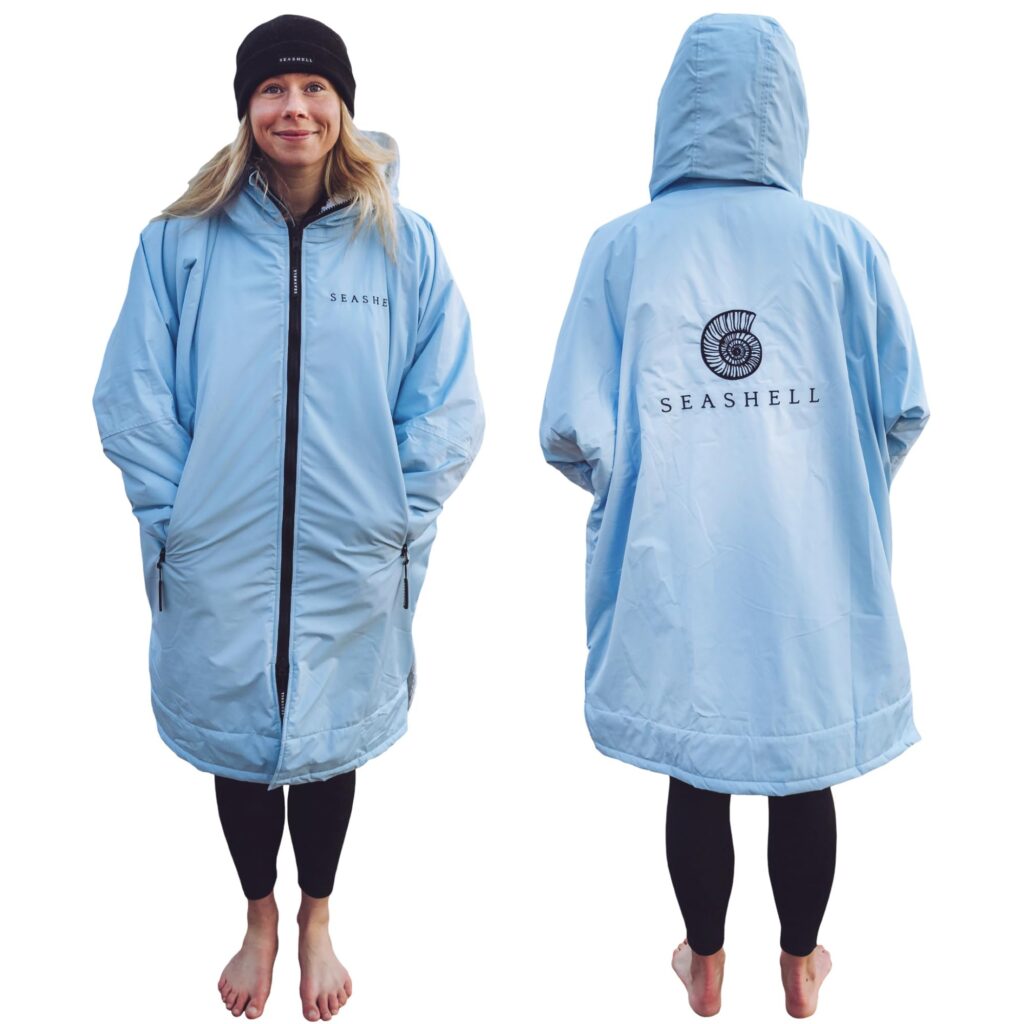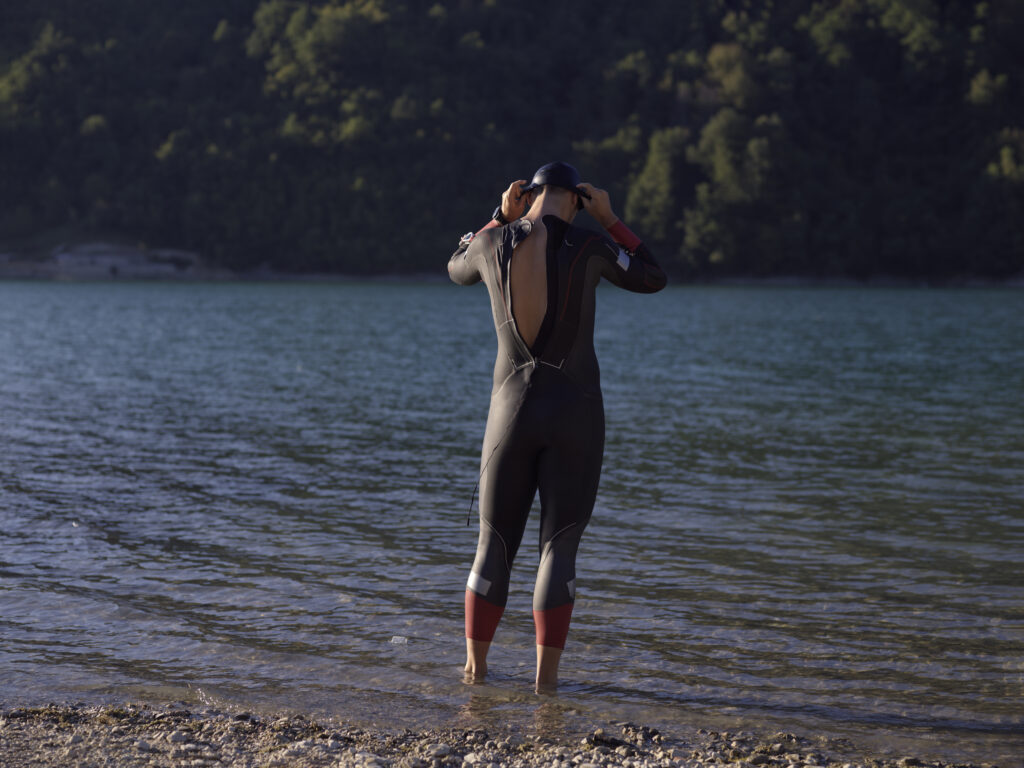The Netherlands offers numerous excellent lakes for both recreational and wild swimming, despite being known primarily for its canals and coastal beaches. The country’s top swimming lakes include Nieuwe Meer in Amsterdam, Grevelingen Lake in Zeeland, and various natural pools in Groningen, each offering clean water and proper facilities for swimmers. These water bodies range from urban lakes easily accessible by public transport to remote natural swimming spots perfect for wild swimming enthusiasts.
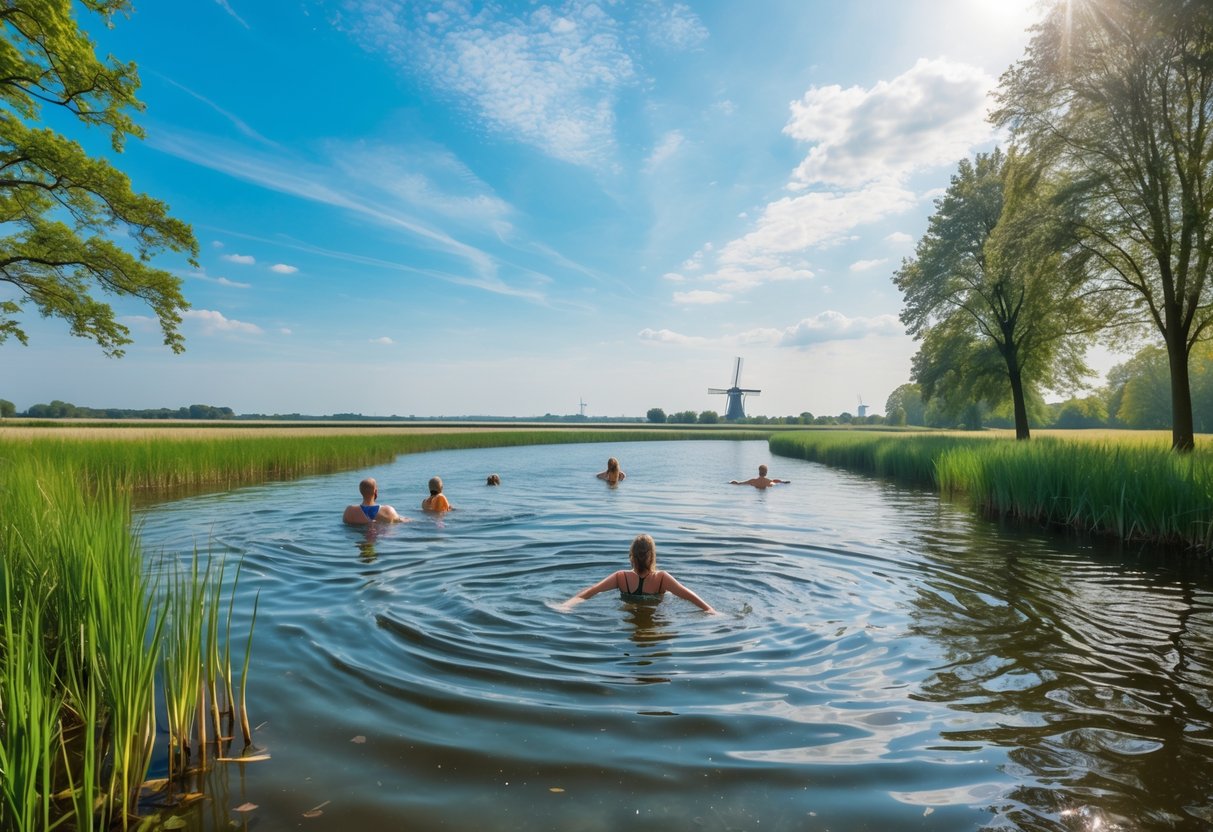
Many Dutch lakes were created through centuries of land reclamation and water management, transforming former polders and gravel pits into popular swimming destinations. Wild swimming locations can be found throughout the country, from the northern provinces to the southern regions. The variety ensures swimmers can find spots suited to their preferences, whether they seek family-friendly recreational areas or secluded natural environments.
Swimming in Dutch lakes provides an authentic local experience whilst escaping the crowds often found at coastal beaches. The water quality at designated swimming areas is regularly monitored, and many locations feature amenities such as beaches, changing facilities, and nearby refreshment options. Understanding which lakes offer the best conditions and facilities helps swimmers make informed choices about where to take their next dip.
Key Takeaways
- The Netherlands features diverse swimming lakes ranging from urban accessible spots to remote wild swimming locations across all provinces
- Many top swimming lakes were created through land reclamation projects and offer monitored water quality with proper facilities
- Dutch lakes provide an authentic alternative to crowded beaches with options suitable for both recreational families and wild swimming enthusiasts
Understanding Lakes in the Netherlands
The Netherlands contains over 2,500 square kilometres of lakes and water bodies, most of which are artificial creations rather than natural formations. These freshwater systems play a central role in Dutch flood management whilst providing essential recreational spaces for swimming and water sports.
Geology and Formation of Dutch Lakes
None of the Netherlands’ largest lakes formed naturally. They exist as direct results of human engineering projects designed for flood protection and land reclamation.
The IJsselmeer represents the country’s most significant artificial lake creation. Engineers constructed massive dikes and dams to separate this freshwater body from the Wadden Sea. This project created nearly 1,100 square kilometres of fresh water.
Most smaller lakes developed from peat extraction activities. Workers dug up peat for fuel during the medieval period, leaving behind water-filled holes. These excavations gradually expanded into the recreational lakes visible today.
Clay and sand extraction also contributed to lake formation. Industrial activities created deep pits that filled with groundwater and rainwater. Many of these former quarries now serve as popular swimming destinations.
The country’s flat topography and high water table meant that any excavation quickly filled with water. This geological reality shaped the abundance of lakes across the Dutch landscape.
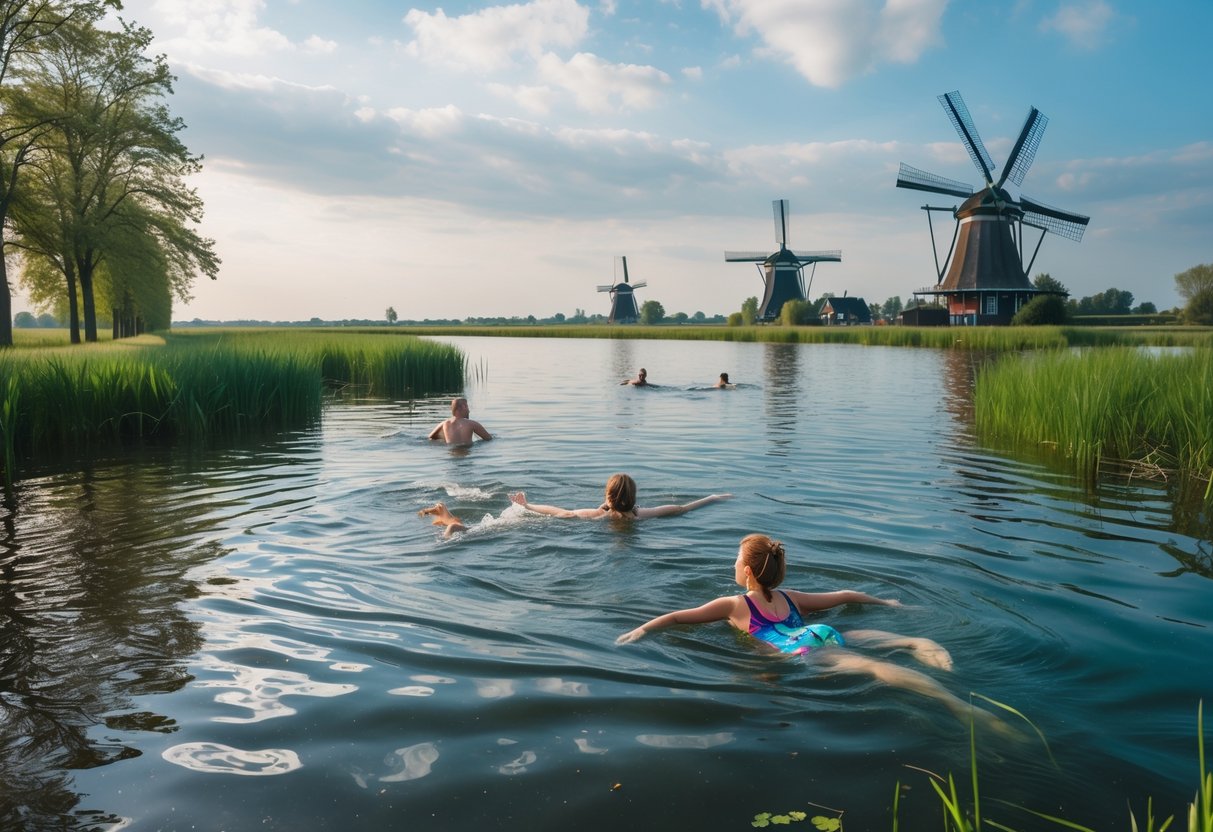
Types of Water Bodies in the Netherlands
The Netherlands Environmental Assessment Agency distinguishes over 20 different types of water bodies. These range from freshwater lakes to brackish coastal waters and ancient fens.
Freshwater Lakes make up the majority of swimming destinations. The IJsselmeer, Markermeer, and Gooimeer represent the largest freshwater systems. These lakes maintain excellent water quality for recreational activities.
Polders and Fens create unique wetland environments. These low-lying areas feature shallow waters surrounded by reed beds and grasslands. They support diverse wildlife whilst offering calm swimming conditions.
Former Quarries provide some of the deepest swimming waters. Sand and gravel extraction sites often reach depths of 20-30 metres. These lakes typically feature crystal-clear water due to minimal sediment disturbance.
Canal Systems connect many water bodies throughout the country. These narrow waterways link larger lakes and provide additional swimming opportunities in urban areas.
Role of Lakes in Dutch Culture and Recreation
Lakes serve as essential escape routes from the Netherlands’ dense urban environment. Amsterdam residents particularly rely on nearby lakes during heat waves when air conditioning remains scarce in the city.
Swimming culture thrives around these water bodies. Many lakes feature designated swimming areas with safety facilities and water quality monitoring. Nudist beaches exist at several locations, reflecting the Dutch approach to body acceptance.
Water Sports dominate lake activities throughout the country. Sailing, windsurfing, and kayaking attract thousands of participants each weekend. The shallow depths and steady winds create ideal conditions for beginners and experts alike.
Family Recreation centres around lake beaches during summer months. Many locations provide playgrounds, barbecue facilities, and snack bars. These amenities transform lakes into complete day-trip destinations for Dutch families.
Cultural events and festivals frequently occur at lakeside venues. The combination of water access and open spaces makes lakes perfect for outdoor concerts and community gatherings.
Top Lakes in the Netherlands for Recreational and Wild Swimming
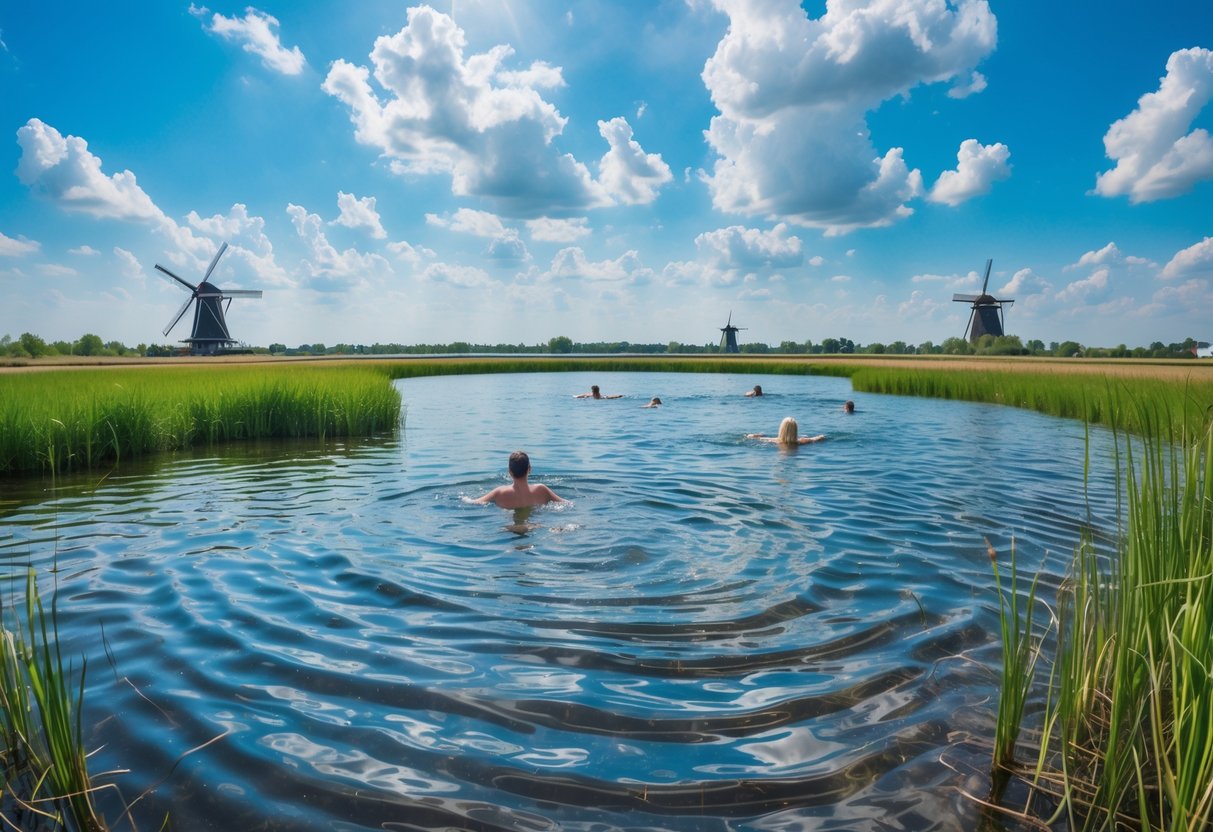
The Netherlands offers several excellent lakes for swimming enthusiasts, ranging from the massive IJsselmeer with its sandy beaches to the intimate Loosdrechtse Plassen with numerous small lakes. These waters provide both designated swimming areas and opportunities for wild swimming adventures.
IJsselmeer
IJsselmeer stands as the largest lake in the Netherlands and ranks among the most beautiful lakes in Europe. This massive freshwater lake offers excellent swimming conditions with multiple beaches and designated swimming areas.
The lake features several popular swimming locations along its coastline. Batavia Beach near Lelystad provides sandy shores and shallow waters perfect for families. The Marker Wadden area offers more secluded spots for wild swimming enthusiasts.
Water Quality: IJsselmeer maintains good water quality with regular testing. The lake’s size means water temperatures remain stable during summer months.
Facilities: Many areas around IJsselmeer include:
- Car parks and changing facilities
- Restaurants and cafés nearby
- Boat rental services
- Designated swimming zones
The lake’s western shores near Enkhuizen and Medemblik provide particularly scenic swimming spots. These areas combine historical charm with excellent water access.
Loosdrechtse Plassen
Loosdrechtse Plassen consists of multiple interconnected lakes in the Utrecht province. This lake system offers diverse swimming experiences across its various water bodies.
The area includes both developed beaches and natural swimming spots. Oud-Loosdrecht provides the main beach area with facilities and lifeguard services during peak season. Smaller lakes within the system offer quieter wild swimming opportunities.
Swimming Options:
- Main beach areas: Supervised swimming with facilities
- Quiet coves: Perfect for peaceful wild swimming
- Island spots: Accessible by small boat or kayak
Water quality remains consistently good throughout the lake system. The relatively shallow depths and protection from strong winds make these lakes ideal for recreational swimming.
Local sailing and water sports clubs provide additional amenities. The surrounding nature reserves create a peaceful environment away from urban areas.
Veluwemeer
Veluwemeer connects the IJsselmeer to the eastern Netherlands and offers excellent swimming conditions. This elongated lake provides both developed recreation areas and natural swimming spots.
The western shore near Harderwijk features several organised beaches with facilities. These areas include Strand Horst and Dolfinarium Beach, both offering safe swimming conditions and amenities.
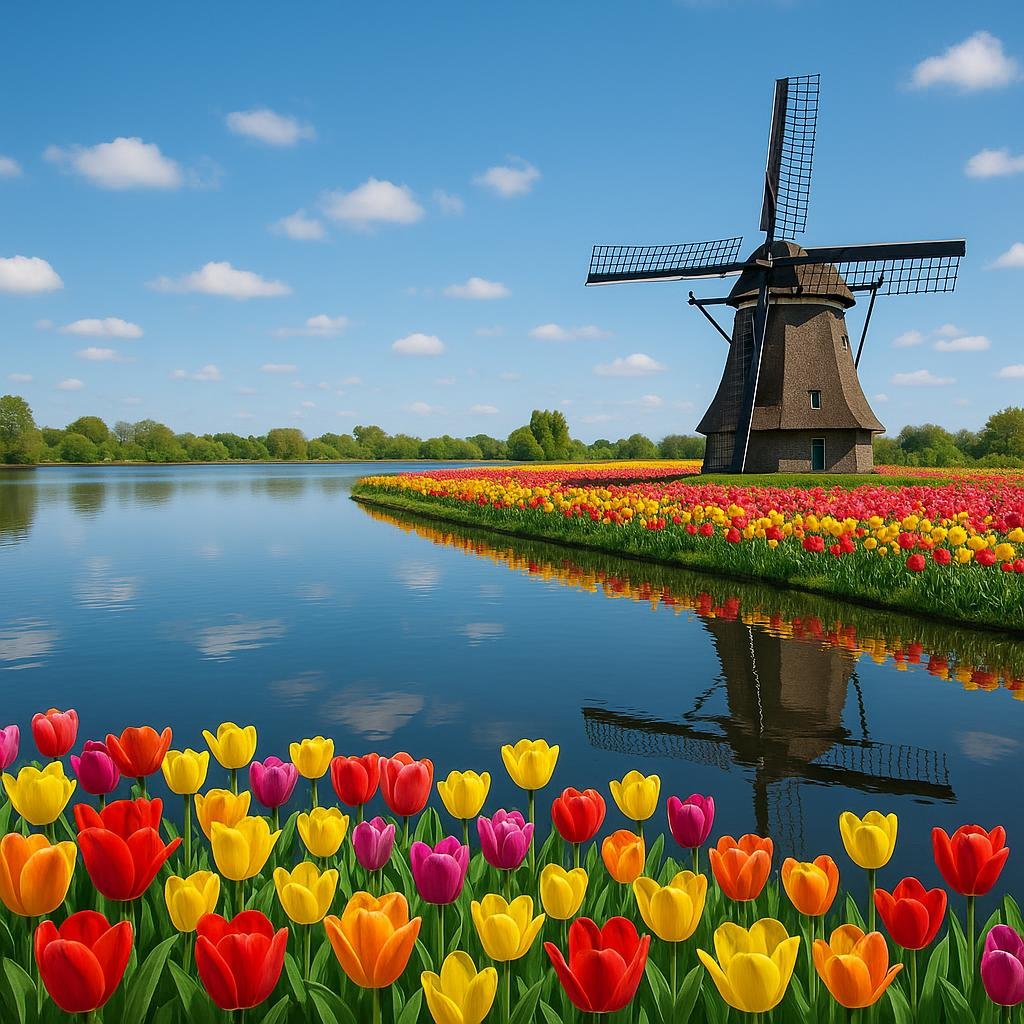
Key Features:
- Clear, clean water with regular quality monitoring
- Multiple beach access points along both shores
- Shallow areas suitable for children
- Deeper sections for confident swimmers
The eastern shore provides more natural swimming environments. Small beaches and coves offer opportunities for wild swimming away from crowds.
Veluwemeer’s location makes it easily accessible from major Dutch cities. The surrounding Veluwe National Park adds scenic beauty to swimming excursions.
Markermeer
Markermeer forms part of the IJsselmeer system but maintains its own distinct character. This lake offers excellent swimming opportunities with less crowded conditions than its larger neighbour.
The lake features several small beaches and natural swimming areas. Lelystad’s Batavia Beach extends into Markermeer waters, providing developed facilities and safe swimming conditions.
Wild swimming enthusiasts appreciate Markermeer’s quieter nature. The lake’s eastern shores offer secluded spots perfect for peaceful swimming sessions.
Swimming Conditions:
- Generally calmer waters than IJsselmeer
- Good visibility and clean water
- Varied depths suitable for different swimming abilities
- Natural shorelines with minimal development
The Marker Wadden artificial islands create unique swimming environments. These relatively new additions provide sheltered waters and interesting wildlife viewing opportunities.
Access to Markermeer swimming spots varies from developed beaches to natural shoreline areas requiring short walks from car parks.
Outstanding Regional Lakes and Unique Swimming Spots
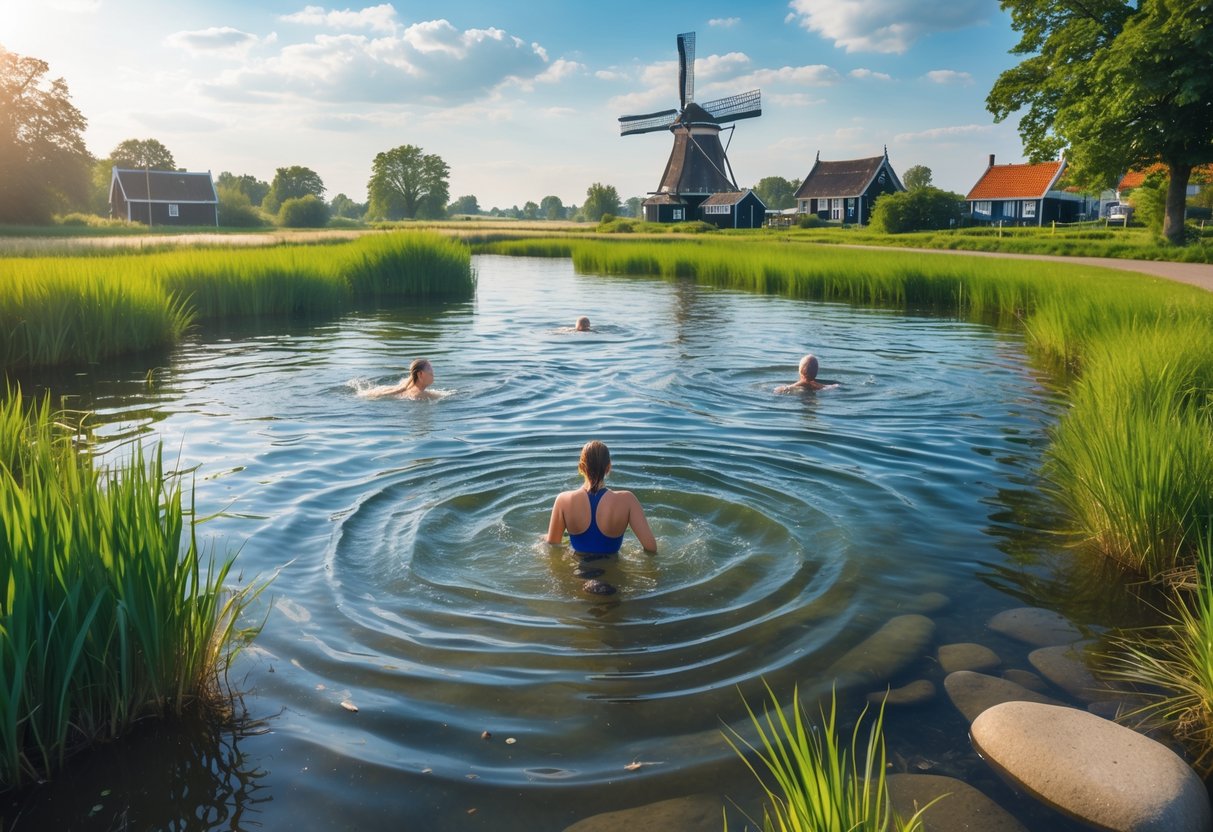
The Netherlands features several exceptional regional lakes that offer pristine swimming conditions and unique natural settings. These locations combine excellent water quality with distinctive recreational facilities and scenic environments.
Zevenhuizerplas and Aquabest
Zevenhuizerplas stands out as one of South Holland’s premier swimming destinations near Rotterdam. This artificial lake maintains consistently high water quality standards throughout the swimming season.
The lake features multiple sandy beaches and designated swimming areas. Visitors can access changing facilities, toilets, and parking directly at the waterfront.
Aquabest operates as a recreational water park in Eindhoven that combines natural lake swimming with modern amenities. The facility utilises natural lake water whilst providing supervised swimming areas.
Key features include:
- Beach areas: Multiple sandy shores for sunbathing
- Water sports: Kayaking and paddleboarding rental
- Facilities: Restaurant, changing rooms, and lifeguard services
- Season: Open May through September
Both locations offer excellent water clarity and maintained swimming zones. Zevenhuizerplas attracts families seeking natural lake experiences, whilst Aquabest appeals to those wanting enhanced recreational facilities.
Asterdplas and Blauwe Meer
Asterdplas serves as Amsterdam’s closest natural swimming lake, located just 20 minutes from the city centre. This former sand quarry now provides crystal-clear water ideal for swimming and diving.
The lake reaches depths of 30 metres in some areas. Multiple entry points allow swimmers of different abilities to access suitable depths.
Blauwe Meer in Limburg offers one of the Netherlands’ most scenic wild swimming experiences. This blue-tinted lake features remarkable water clarity due to its limestone bottom.
Swimming conditions at both lakes:
- Water temperature: 18-22°C in summer
- Visibility: Excellent underwater clarity
- Access: Free public swimming
- Parking: Available on-site
Asterdplas provides urban convenience with natural swimming quality. Blauwe Meer delivers a more remote, pristine environment perfect for nature enthusiasts.
Brielse Meer and Kagerplassen
Brielse Meer functions as a large freshwater lake near Rotterdam, offering extensive swimming areas and water sports facilities. The lake maintains excellent water quality through natural filtration systems.
Multiple beaches surround the lake perimeter. Each beach provides different amenities and swimming conditions to suit various preferences.
Kagerplassen consists of interconnected lakes between Leiden and Amsterdam, creating unique swimming opportunities amongst traditional Dutch landscapes. These historic lakes feature shallow, warm waters ideal for family swimming.
Notable characteristics include:
- Brielse Meer: 800 hectares of swimming area
- Kagerplassen: Multiple connected water bodies
- Facilities: Boat launches, beaches, and picnic areas
- Activities: Swimming, sailing, and fishing
Both locations provide excellent access to natural bathing lakes in unique natural landscapes. Brielse Meer suits active water sports enthusiasts, whilst Kagerplassen offers peaceful swimming in historic settings.
Natural and Scenic Lakes for Wild Swimming
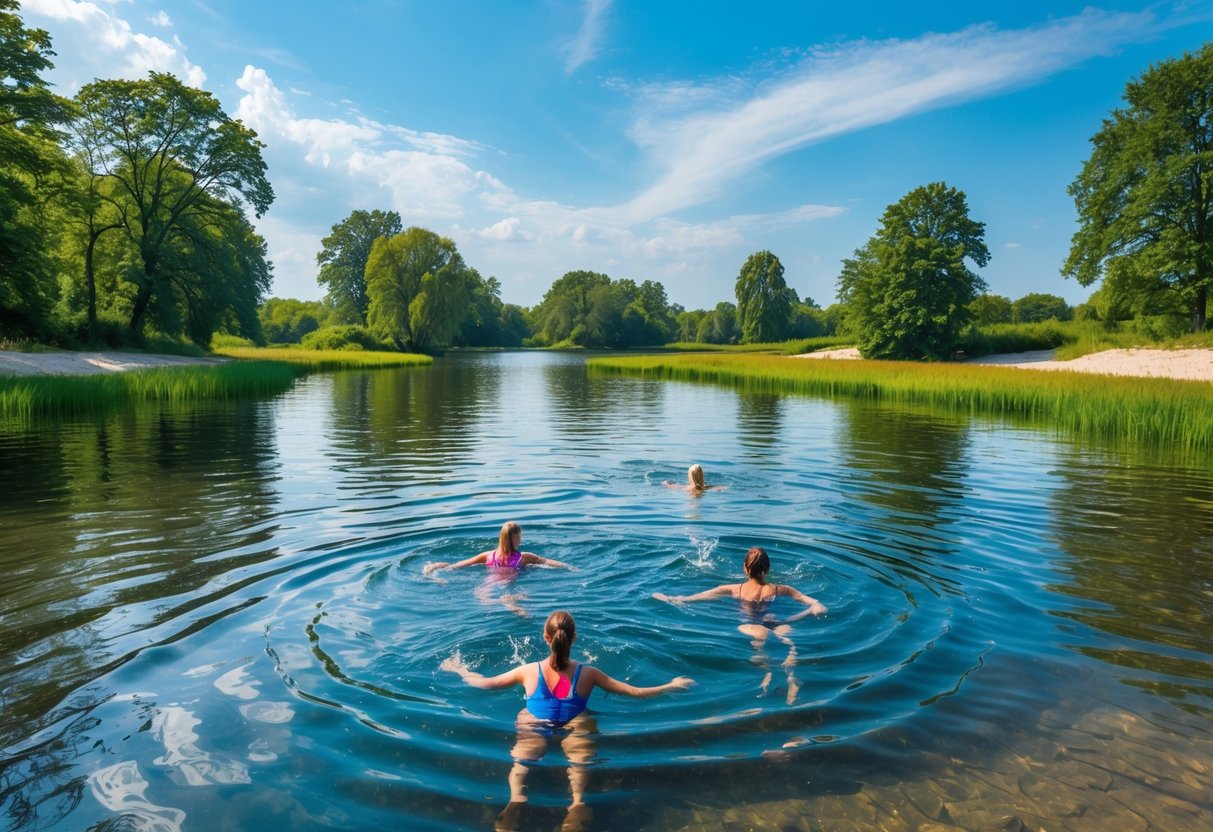
The Netherlands offers several pristine lakes perfect for wild swimming enthusiasts seeking natural beauty and clean waters. These locations combine excellent water quality with stunning landscapes, from former sea arms to nature reserves.
Grevelingen and Haringvliet
The Grevelingenmeer stands as Europe’s largest saltwater lake, created when the Grevelingen estuary was closed off from the North Sea. This former sea arm maintains exceptional water quality due to limited human activity and strong tidal movements through sluices.
Wild swimmers appreciate the lake’s crystal-clear waters and diverse underwater landscape. The salinity makes floating easier compared to freshwater lakes.
The surrounding Grevelingen National Park provides dramatic coastal scenery. Rocky shores and sandy beaches offer multiple entry points for swimmers of different abilities.
Key features:
- Water type: Saltwater
- Visibility: Up to 8 metres
- Best spots: Scharendijke and Den Osse beaches
- Facilities: Car parks and toilets nearby
Haringvliet, connected to the Grevelingenmeer system, offers similar conditions with slightly brackish water. The lake’s eastern sections provide calmer conditions ideal for longer swimming sessions.
Both lakes maintain consistent temperatures during summer months. Water quality monitoring shows excellent results year-round.
Zuidlaardermeer and Lauwersmeer
Zuidlaardermeer in Groningen province offers one of the Netherlands’ most picturesque wild swimming experiences. This natural lake spans 3,000 hectares with remarkably clear water.
The lake’s shallow areas warm quickly in spring and summer. Maximum depth reaches 20 metres, providing variety for different swimming preferences.
Reed beds and water lilies create a stunning natural backdrop. The surrounding countryside features traditional Dutch farmland and small villages.
Swimming conditions:
- Water temperature reaches 22°C in summer
- Excellent visibility throughout most areas
- Multiple access points via country lanes
- Wild camping permitted in designated zones
Lauwersmeer National Park encompasses a unique transition zone between freshwater and former sea. This artificial lake was created after the Lauwerszee was closed off in 1969.
The park’s diverse ecosystem attracts numerous bird species. Swimmers often spot seals that have adapted to the changing environment.
Eastern shores provide the best swimming conditions with gradual entry points and sandy bottoms.
Oldambtmeer and Weerwater
Oldambtmeer represents successful land reclamation transformed into recreational paradise. This artificial lake in Groningen offers surprising beauty despite its industrial origins.
The lake’s geometric shape reflects its engineered nature, but wildlife has flourished since its creation. Water quality remains consistently high due to careful management.
Notable features:
- Consistent 2-3 metre depth ideal for swimming
- Protected from strong winds by surrounding dykes
- Easy access via cycle paths and walking routes
- Popular with local wild swimming groups
Weerwater near Almere provides urban wild swimming without compromising on natural beauty. This large lake offers expansive open water perfect for distance swimming.
The lake connects to the larger Markermeer system, ensuring good water circulation. Regular monitoring maintains high safety standards.
Swimming areas feature marked zones during peak season. Outside these times, the entire lake becomes available for wild swimming enthusiasts.
Surrounding parks and nature reserves provide changing facilities and refreshment options. The combination of accessibility and natural setting makes Weerwater particularly popular with Amsterdam residents.
Urban and Accessible Lakes Near Major Cities
Dutch cities offer excellent swimming lakes within easy reach of urban centres. These spots provide quick escapes from city life with proper facilities and public transport connections.
Gaasperplas and Kralingse Plas
Gaasperplas sits in Amsterdam Zuidoost and ranks among the best lakes around Amsterdam for urban swimmers. The lake features sandy beaches and designated swimming areas.
Metro line 50 connects directly to the lake. Visitors find changing facilities and cafés nearby.
Kralingse Plas serves Rotterdam residents as a popular recreational lake. The 2.3-kilometre shoreline offers multiple swimming spots and walking paths.
Rowing clubs and sailing schools operate from the lake. The surrounding Kralingse Bos park provides picnic areas and playgrounds for families.
Both lakes maintain good water quality during summer months. Local authorities monitor swimming conditions regularly.
Veerplas and Loosdrechtse Plassen
Veerplas in Utrecht provides city dwellers with accessible swimming opportunities. The former sand quarry transformed into a recreational lake with clear water.
Public transport reaches the lake easily from Utrecht Central Station. Swimming areas include both shallow and deep sections.
Loosdrechtse Plassen consists of multiple connected lakes near Hilversum. These lakes attract swimmers from Amsterdam and Utrecht regions.
The area offers official swimming locations with facilities. Visitors can rent boats or try water sports.
Several beaches provide entry points for swimmers. The Oud-Loosdrecht area features the most developed swimming facilities.
Popular Swimming Lakes in South Holland
Delftse Hout serves Delft residents with a recreational lake and beach area. The park combines swimming with walking trails and sports facilities.
Vlietland near Zoetermeer offers extensive water recreation. Multiple lakes within the area provide swimming opportunities for different skill levels.
Westeinderplassen attracts visitors from Leiden and surrounding areas. These interconnected lakes feature both busy and quiet swimming spots.
South Holland’s lakes benefit from regular water quality testing. Most locations provide car parking and refreshment facilities during peak season.
Transport links connect these lakes to major cities through regional bus services. Cycling routes also provide alternative access methods.
Historic and Transformed Water Landscapes
The Netherlands has dramatically transformed many of its water bodies from their original forms, creating unique swimming environments through centuries of land reclamation and water management. Former inland seas like Haarlemmermeer now offer recreational lakes, whilst restored waterways in Gelderland and purpose-built facilities in Groningen provide diverse swimming opportunities across reclaimed landscapes.
Haarlemmermeer and Purmer
Haarlemmermeer represents one of the Netherlands’ most ambitious water transformation projects. This former inland sea was drained in the 1850s, creating a vast polder that fundamentally changed the region’s geography.
The original Haarlemmermeer covered approximately 18,000 hectares before drainage operations began. Steam-powered pumping stations removed the water over several years, leaving behind fertile agricultural land.
Today, remnants of this historic lake system provide swimming opportunities through carefully managed water bodies. The Braassemermeer, connected to the original Haarlemmermeer system, now serves as a popular bathing destination with catering facilities and nearby accommodation.
The Purmer region underwent similar transformation. Originally a large lake north of Amsterdam, it was drained in the 17th century through innovative pumping techniques.
Modern recreational lakes in the former Purmer area maintain connections to this historic landscape. These waters benefit from centuries of Dutch water management expertise, ensuring clean conditions for swimming whilst preserving the area’s cultural heritage.
Lake Restoration and Management in Gelderland
Gelderland province demonstrates sophisticated approaches to managing historic water landscapes for recreational use. The region combines traditional Dutch water management with modern ecological restoration techniques.
Many of Gelderland’s swimming lakes originated as gravel extraction sites or former river channels. These areas have been carefully restored to create safe swimming environments whilst maintaining ecological balance.
Water quality management follows strict protocols developed over decades of experience. Regular testing ensures bathing safety, with local authorities conducting inspections throughout the swimming season.
The province’s lake restoration projects often incorporate historic flood plains and former river meanders. This approach creates diverse swimming environments that reflect the area’s natural water heritage.
Gelderland’s lakes frequently feature graduated depths and natural shorelines. These design elements make them suitable for both confident swimmers and families with children.
Recreational Opportunities in Groningen
Groningen province has developed extensive recreational swimming facilities within its historic water landscape framework. The region’s lakes combine natural heritage with modern amenities for diverse user groups.
Many swimming locations offer facilities for dogs, children, and naturist bathing. This variety reflects Groningen’s commitment to inclusive recreational access across transformed water landscapes.
The province’s swimming lakes often feature sandy beaches and child-friendly infrastructure. Playgrounds, toilets, and lifeguard services enhance safety and comfort for families.
Public transport access connects many of Groningen’s lakes to urban centres. This accessibility allows residents to reach swimming locations without private vehicles, supporting sustainable recreation.
Popular facilities include:
- Sandy beach areas
- Children’s play zones
- Parking facilities
- Catering services
- Equipment rental
The integration of historic water management with modern recreational needs exemplifies Groningen’s approach to lake development. These facilities serve both local residents and tourists seeking authentic Dutch swimming experiences.
Frequently Asked Questions
Swimming enthusiasts can find over 889 official swimming spots across the Netherlands, with major cities offering excellent lake options within easy reach. Popular destinations include the IJsselmeer system, urban lakes around Amsterdam, and specialised water sports areas like the Maasplassen.
Which lakes in the Netherlands are recommended for outdoor swimming?
The IJsselmeer stands out as the Netherlands’ largest lake at 1,100 square kilometres, offering sandy beaches and shallow waters perfect for swimming. Enkhuizen provides the closest beach access to Amsterdam with gentle entry points into the water.
Markermeer, the second-largest lake, features the Marker mudflats as its only public island. Swimmers can explore this expansive beach area whilst enjoying excellent water quality.
The Maasplassen represents the largest contiguous water sports area in the Netherlands. These interconnected lakes provide numerous swimming opportunities across multiple locations.
Veluwemeer spans 30 square kilometres with wide vistas and sandy beaches. The lake offers shallow swimming areas and features small islands accessible by boat for secluded swimming spots.
Can you list top-rated lakes near Amsterdam suitable for swimming?
Nieuwe Meer sits alongside the Amsterdamse Bos with a long beach featuring two official swimming areas. The lake includes private coves and maintains excellent water quality for recreational swimming.
Sloterplas underwent recent renovations and now offers top-quality swimming facilities. The lake features a recreational beach on the northwest bank with volleyball courts and picnic areas.
Gaasperplas provides diverse recreational opportunities with sprawling lawns and sandy beaches on the southern side. The lake includes a water playground for children and maintains metro accessibility via Metro 53.
Ouderkerkerplas offers swimming, diving, and sailing opportunities with shallow water on the north side. The beach features play facilities and maintains a nature reserve along its banks.
What are the most popular swimming spots in Rotterdam?
Kralingen Lake serves as Rotterdam’s primary swimming destination for water sports and recreational activities. The lake accommodates rowing, sailing, and swimming whilst maintaining easy urban access.
Rotterdam’s lake system focuses primarily on Kralingen Lake for organised swimming activities. The city maintains this location as its main aquatic recreational facility.
Local swimmers frequently use Kralingen Lake for training and leisure activities. The lake’s urban location provides convenient access for Rotterdam residents seeking nearby swimming opportunities.
Where can I find ideal lakes for swimming in The Hague?
The Hague area provides access to several regional lakes within short travelling distances. Westeinderplassen near Aalsmeer offers excellent swimming conditions with clear blue waters and multiple access points.
Swimmers from The Hague often visit the connected lake systems in nearby regions. These locations provide better swimming facilities than urban alternatives within the city itself.
Regional connectivity allows The Hague residents to access quality swimming lakes within 30-45 minutes of travel time. Public transport links facilitate easy access to multiple lake destinations.
Could you suggest some lakes near Leiden that are perfect for a swim?
Kagerplassen northeast of Leiden attracts university students and water sports enthusiasts with its network of canals and islands. The recreational beach at Koudehoorn on ‘t Joppe island provides excellent swimming facilities.
The Kagerplassen system features the highest concentration of windmills in the Netherlands. This creates a picturesque swimming environment with historic charm and excellent water access.
Koudehoorn beach offers easily accessible swimming with pavilion facilities for refreshments. The location provides ideal conditions for both casual swimming and water sports activities.
Are there any well-known natural swimming locations in the vicinity of Dutch cities?
Loosdrechtese Plassen between Amsterdam and Utrecht offers natural swimming in a green environment with water lilies and diverse bird species. The recreation area De Strook features a wide sandy beach with barbecue facilities.
Strijkviertelplas in Utrecht maintains a peaceful atmosphere despite its urban proximity. The lake provides gently sloping beaches perfect for natural swimming experiences.
The Netherlands contains hundreds of lakes covering 2,500 square kilometres of total water surface. Many of these locations offer natural swimming opportunities within easy reach of major cities.
Natural swimming locations often feature shallow entry points and sandy bottoms. These characteristics make them particularly suitable for families and recreational swimmers seeking authentic lake experiences.

